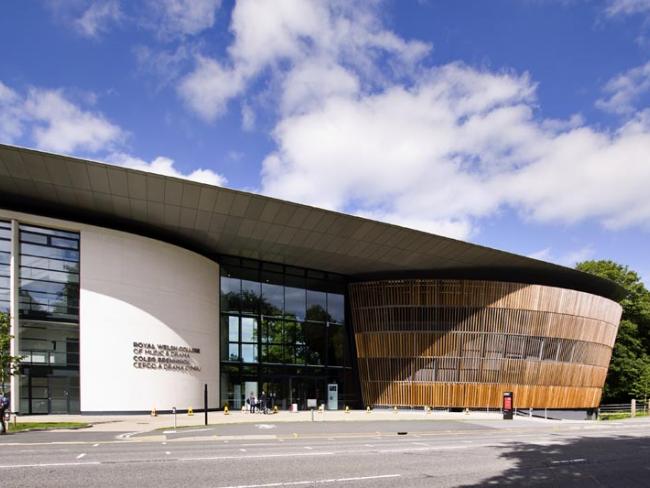23 October 2024

The Royal Welsh College of Music and Drama: planning to cut its junior programmes. Photo salisz/shutterstock.com.
Arts education provision across Britain is suffering from continuing cuts including instrumental music, drama and visual arts. Workers in arts and education are trying to build campaigns to counter this decline.
In September the TUC supported a motion for increased arts funding, including arts education. This may be a spur to further pressure on government and councils across the country.
Funding standstill
Chris Walters, the Musicians’ Union National Organiser for Health and Well-being, said earlier this year, “England’s network of music education hubs, introduced by government in 2012 to address nationwide inequalities in children's access to music provision, have operated on standstill funding for a decade and struggled to narrow the musical divide they were created to close”.
“Learning a musical instrument is not accessible unless your parents pay for it.”
He points to the outcome, “The net result is that learning a musical instrument is now not really accessible unless your parents can pay for it.” The Artists’ Union England added their voice to this aspect of the campaign when they called for arts education to be restored through primary, secondary, further and higher education. They also called upon the TUC to support and lobby for publicly funded arts.
Another body campaigning for the arts as an essential part of education is the Workers Music Association. Ben Lunn, Chair Musicians’ Union Scotland & Northern Ireland, who addressed the rally against arts cuts in Edinburgh on 5 September, pointed to their long legacy of advocating for properly funding the arts. This goes back to at least to 1945, when the WMA published Music in Post War Britain surveying the many facets of musical life and how best to assure their well-being.
Connected
Education is just one aspect of arts and culture, but all are connected: funding; provision, engagement, and employment all interact with arts education. And on a wider scale there is no real separation from heritage, libraries, the media and the other creative arts activities.
A report published in July by the Campaign for the Arts and the University of Warwick, The State of the Arts, reflects this interdependence and examines the threats across the whole range of cultural activity.
‘Reduced funding and marginalisation of the arts schools underlies the decline in arts participation.’
The report echo analysis from the Musicians’ Union pointing out the dramatic fall in arts funding since 2010 and the catastrophic decline in arts participation and enrolment. One important underlying reason is reduced funding and marginalisation of the arts in English state schools. It will be of assistance to unions in their effort to recruit and organise.
The report also looks into the precarious nature of much of the employment in the arts overall. That’s important for the future of teachers in the arts as well as performers. They open the door to the next generation of professional artists – as well as bringing cultural appreciation to everyone.
False economy
Adam Behr of Newcastle University writing for The Conversation website in April described as a false economy the prioritising funding for science, technology, engineering and maths (STEM) higher education while freezing spending on arts subjects.
He points out that in addition to their inherent cultural value, the arts and creative industries are an important part of the British economy. And Behr argues that it’s wrong to set up a dichotomy between sciences and arts in education, or elsewhere. They interact on many levels, in education, research and the wider economy.
‘Cutting university arts courses leads to further decline.’
When funding cuts reduce arts education provision the result is that universities cut courses, leading to further decline. The irony is that arts courses are generally cheaper to teach than STEM subjects, so average costs for each student increase when arts courses are cut – leading to more financial pressure.
The Labour Party’s election manifesto was big on promises in education and arts, as it was across the board. It claimed that “arts and music will no longer be the preserve of a privileged few” and that it would implement a “creative industries sector plan” as part of its industrial strategy.
Step up
That strategy as outlined in the King’s Speech in July consists of: delivering clean power by 2030; harnessing data for the public good; caring for the future; and building a more resilient economy. And not too much about manifesto promises for the arts. It looks like arts education workers and the wider creative sector will have to step up their growing campaigning.
• A shorter, edited version of this article appears in the November/December issue of Workers magazine.
